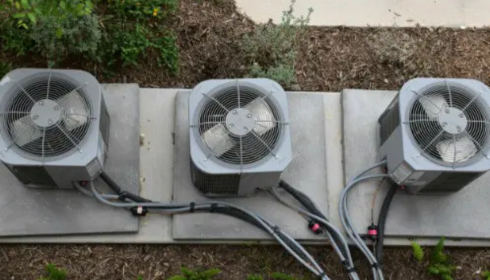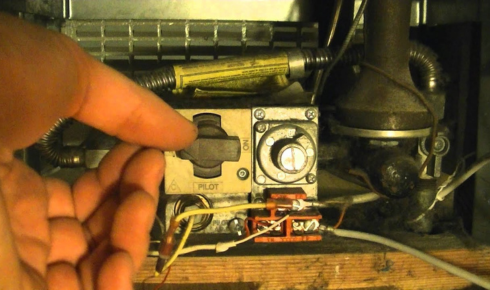Walk into almost any house, and you’ll notice something: not every room feels the same. The living room might be chilly while the upstairs bedroom is sweltering. You fiddle with the thermostat, but it’s a losing game—fixing one area usually throws another out of balance. For decades, homeowners just accepted this tug-of-war with indoor comfort. But lately, there’s been a quiet shift. People are discovering smarter ways to heat and cool their homes without the constant thermostat shuffle.
That shift has a name, and it’s all about zoning. Think of it as giving your home a bit of autonomy, where each area gets the climate control it deserves.
The idea behind zoning
At its core, an hvac zoning system is a simple concept: divide your home into sections (or zones), each with its own temperature setting. Dampers inside the ductwork open or close depending on what each zone needs, while individual thermostats send instructions back to a central control panel. It’s not about reinventing heating and cooling, but refining it so you don’t waste energy making the whole house fit one temperature.
Imagine being able to keep the nursery cozy without roasting the kitchen. Or cooling down the home office without freezing the guest room. That’s zoning in action—personalized comfort, just where you want it.
Comfort meets efficiency
We’ve all been there—someone in the family likes things toasty, while someone else wants a blast of cool air. Normally, this turns into a thermostat battle. But zoning steps in as a peacekeeper. Instead of forcing everyone into one climate, it offers flexibility.
And it’s not just about comfort. The efficiency gains are real. Heating or cooling only the rooms you’re actually using can cut down on wasted energy. This translates into smaller utility bills, fewer arguments, and maybe even a longer lifespan for your system since it doesn’t have to work as hard.
A modern solution for modern homes
Open floor plans, vaulted ceilings, big windows—they look great, but they’re notorious for creating hot and cold spots. Traditional single-zone systems struggle with these architectural quirks. A multi-zone ac setup can handle the challenge with ease. By breaking your house into multiple sections, it doesn’t matter if one side gets full sun while the other stays shaded. Each area gets the attention it needs.
For homeowners in climates with extreme highs and lows, zoning often feels less like a luxury and more like a necessity. After all, who wants to blast the air conditioner for the whole house just because one room feels like an oven?
The everyday benefits nobody talks about
There’s the obvious stuff—lower energy bills, better comfort—but zoning has a bunch of smaller perks too. For example, less wear and tear. When your system isn’t constantly pushing air everywhere, the components get a break. That means fewer service calls and less money spent on repairs.
Noise is another one. Fans and blowers don’t have to run as aggressively, so your system tends to be quieter. And let’s not forget air quality. Directing airflow more intentionally can help reduce the spread of dust, pollen, or cooking smells drifting into every room.
Making sense of costs
Now, here’s where many homeowners hesitate: the upfront investment. Adding zoning to an existing system or installing it with a new one isn’t pocket change. Costs vary depending on the size of the home, how many zones you want, and whether you’re retrofitting or starting fresh.
But here’s the thing—while it might feel like a big check to write, the long-term math often makes sense. Energy savings year after year, fewer repair calls, and the priceless value of not sweating through the night in your upstairs bedroom? That tends to add up.
What it means for families
One of the most underrated aspects of zoning is harmony. Families are filled with people who run hot, cold, or somewhere in between. Giving everyone their own space set to their comfort level cuts down on those thermostat squabbles. It’s a small thing, but anyone who’s argued over “why is it freezing in here” knows how quickly it can wear thin.
Zoning creates a sense of control—over your space, your comfort, and even your budget. It’s a little like moving from a flip phone to a smartphone. Once you’ve had the upgrade, it’s hard to imagine going back.
Thinking about the environment
Beyond personal comfort and savings, zoning has an eco-friendly side too. Using less energy means a smaller carbon footprint. Instead of over-conditioning your entire house, you’re only treating the spaces you actually need. It’s a step—maybe a small one, but meaningful nonetheless—toward greener living.
In an era where more people are paying attention to sustainability, systems like zoning hit that sweet spot between comfort and responsibility.
Is zoning right for every home?
Not always. Smaller homes or apartments might not see much benefit. If your layout is simple and the temperature feels fairly balanced, zoning may not be worth the extra expense. But for larger houses, multi-level layouts, or homes with tricky architecture, it can be a game-changer.
Working with a good contractor is key here. They’ll evaluate your space, ductwork, and usage patterns to recommend whether zoning makes sense. And if you’re building new, it’s worth asking about zoning from the start—it’s easier and cheaper to install during construction.
The rise of smarter controls
Zoning dovetails perfectly with the rise of smart thermostats. Pairing them together allows for schedules, remote control, and even automation based on occupancy. Picture your bedroom gently warming up right before bedtime while the rest of the house coasts in energy-saving mode. That’s the future of zoned heating and cooling, and it’s already here in many homes.
Technology is finally catching up to what we’ve always wanted—comfort that adapts to us, not the other way around.
Wrapping it up
Zoning isn’t some futuristic dream. It’s a practical, proven way to make homes more livable. Sure, it requires an investment, but the payoff is layered: comfort, savings, peace at home, and even a nod to sustainability.
So next time you find yourself fighting with your thermostat—or arguing with your family about it—remember there’s a smarter option out there. One that gives you control room by room, season by season. Zoning might not fix everything in life, but when it comes to your home’s climate, it’s pretty close.




